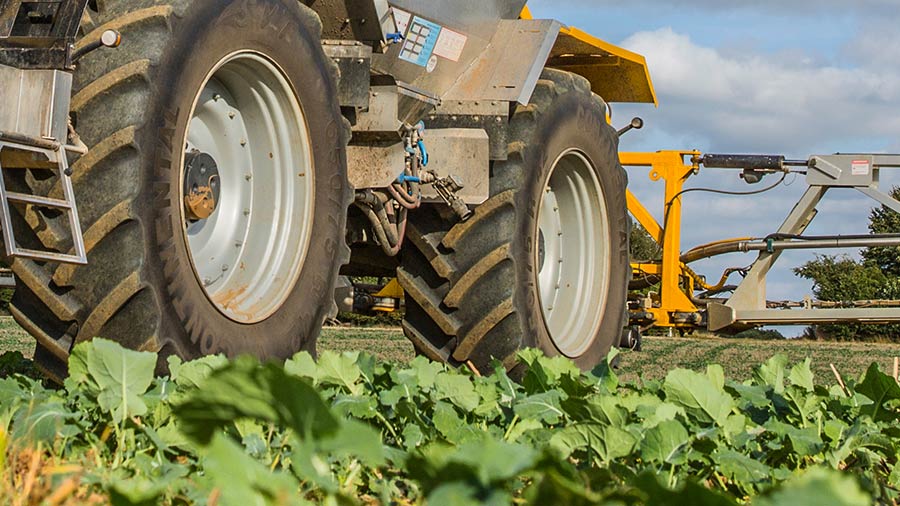Advertiser content
How the herbicide propyzamide behaves in the environment
 © Corteva Agriscience
© Corteva Agriscience A herbicide’s effectiveness is strongly impacted by how it degrades. Propyzamide is strongly bound to soil; however binding becomes stronger as soil organic carbon content increases.
This is why propyzamide efficacy is reduced in soils with organic matter at 10% or above.
Propyzamide is classed as moderate to slightly mobile, depending on soil type, and therefore under normal conditions the risk of leaching is minimal.
Propyzamide does not dissolve easily in water, meaning it is less likely to move with water as it moves through the soil.
Moisture is required to make propyzamide work as sufficient moisture allows enough propyzamide to be available to be taken up by target weed roots. Too little moisture can result in there not being enough available propyzamide for weed control.
However, if applications are made to saturated soils propyzamide molecules may have difficulty encountering soil for binding to take place, this will increase the threat of run off if further rainfall occurs.
Stewardship
Growers must bear in mind that since propyzamide is tightly bound to the soil, particulate run-off to surface water through erosion is a risk.
Propyzamide’s half-life is around one month, longer in colder conditions and shorter in drier warmer conditions. This moderate persistence is essential for residual control of target weeds.
This is also why an interval of 30 weeks is required for planting susceptible crops like cereals after application to oilseed rape with a recommendation to plough to break up any remaining propyzamide zone and encourage further breakdown.
Propyzamide performs best in colder conditions with adequate available moisture, when weed growth is slow their roots spend a maximum length of time in the propyzamide zone optimising root uptake.
Removing propyzamide from water can be costly and difficult for water companies as the process requires ozone and activated carbon.
It is therefore vital that propyzamide applications are made when conditions allow, that the label is adhered to and that if possible, Corteva’s application guidelines supplied via the Kerb weather data service section in the Corteva Arable App, are consulted as part of a grower’s decision-making process.
You can also visit Corteva’s propyzamide stewardship webpage, or download the topic sheet, for the latest advice and links to useful resources at: corteva.co.uk/tools-and-advice/stewardship/Propyzamide-stewardship
Provided by
Corteva Agriscience™ is a world-leading crop protection and seeds business focused on delivering the solutions UK and Irish agriculture needs to succeed.
For more information see our website Corteva Agriscience
